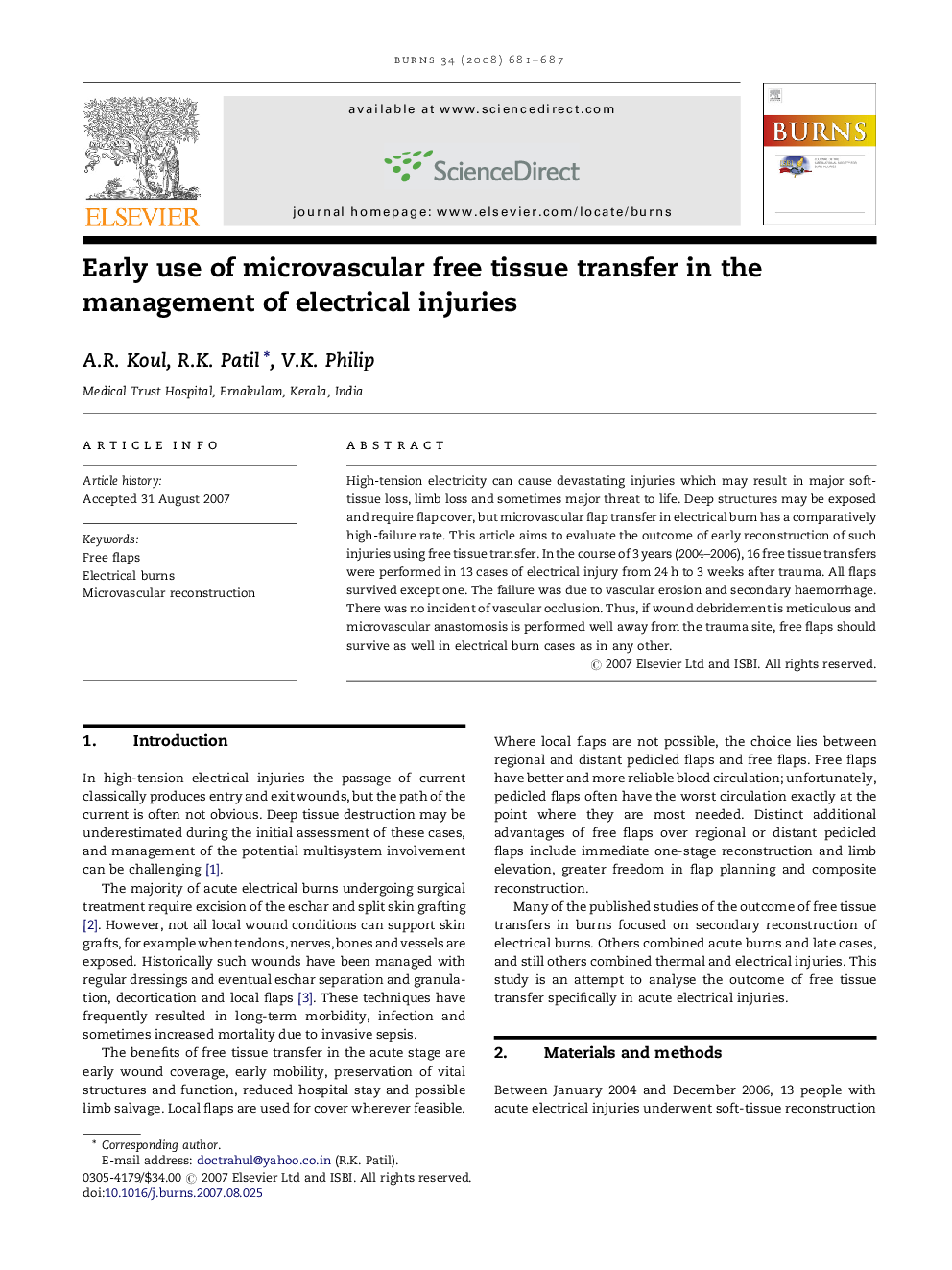| Article ID | Journal | Published Year | Pages | File Type |
|---|---|---|---|---|
| 3106092 | Burns | 2008 | 7 Pages |
High-tension electricity can cause devastating injuries which may result in major soft-tissue loss, limb loss and sometimes major threat to life. Deep structures may be exposed and require flap cover, but microvascular flap transfer in electrical burn has a comparatively high-failure rate. This article aims to evaluate the outcome of early reconstruction of such injuries using free tissue transfer. In the course of 3 years (2004–2006), 16 free tissue transfers were performed in 13 cases of electrical injury from 24 h to 3 weeks after trauma. All flaps survived except one. The failure was due to vascular erosion and secondary haemorrhage. There was no incident of vascular occlusion. Thus, if wound debridement is meticulous and microvascular anastomosis is performed well away from the trauma site, free flaps should survive as well in electrical burn cases as in any other.
